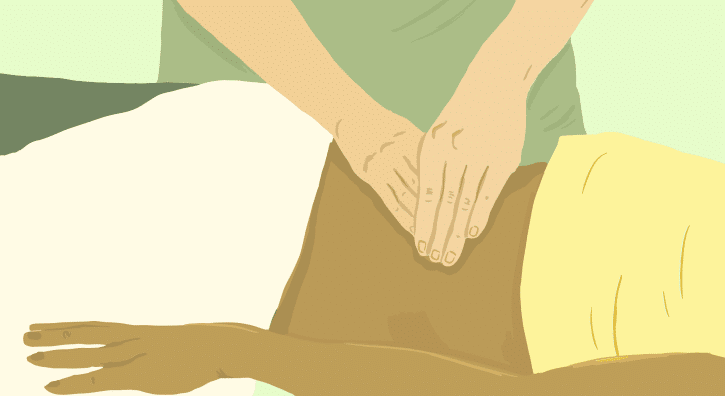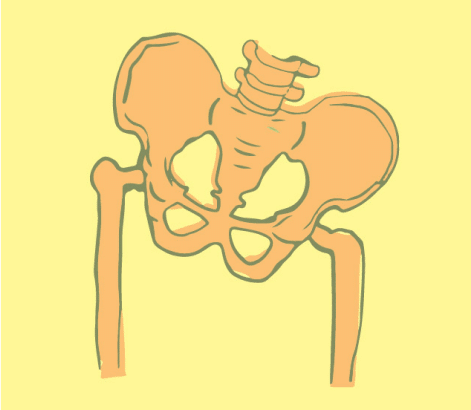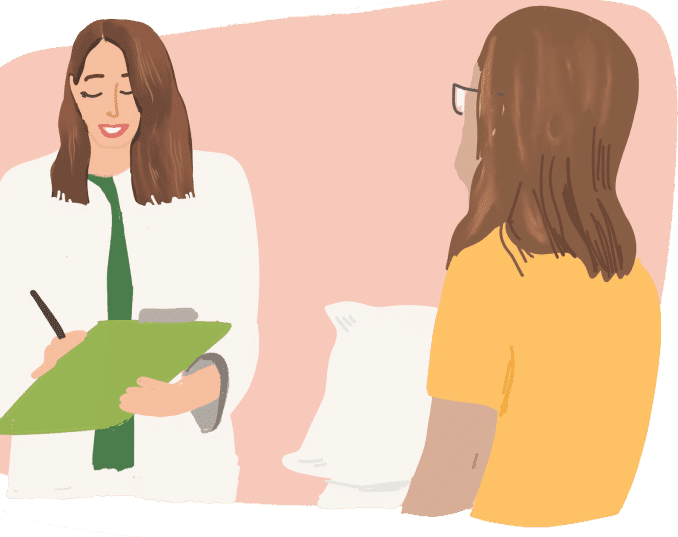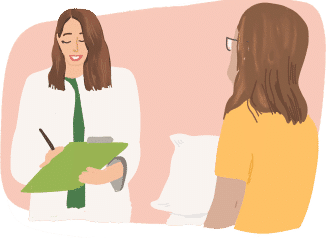

Sexual dysfunction involves ongoing or repeated difficulties in areas such as sexual interest, arousal, orgasm, or discomfort during sexual activity. A key component in sexual function is the pelvic floor musculature. These muscles support erectile function in men and are involved in orgasmic contractions in everyone. Under normal conditions, they do not cause pain and instead contribute to pleasurable sensations. However, when these muscles are compromised due to pelvic floor dysfunction, sexual enjoyment can turn into discomfort or even pain, and functional issues may arise. Such problems can significantly affect quality of life. Fortunately, pelvic floor physical and occupational therapy is an effective treatment that addresses these concerns and supports a return to normal function.
The Facts
- At some stage, one in every three women who are premenopausal will experience pain during sexual activity.
- Erectile dysfunction symptoms impact anywhere from 15% to 72% of men younger than 40.
- Among men aged between 40 and 70, roughly 52% deal with erectile difficulties classified as mild to moderate.
- Post-surgical outcomes show that as many as 80% of men experience erectile dysfunction following prostatectomy.
- A significant portion—60%—of menopausal women choose not to bring up painful intercourse with their doctors, often out of embarrassment.
- Certain prescriptions, including oral contraceptives and acne medications, can contribute to vulvar discomfort and reduced lubrication.
- Even 18 months after childbirth, 65% of postpartum women report ongoing sexual pain.
Sexual dysfunction involves ongoing or repeated difficulties in areas such as sexual interest, arousal, orgasm, or discomfort during sexual activity. A key component in sexual function is the pelvic floor musculature. These muscles support erectile function in men and are involved in orgasmic contractions in everyone. Under normal conditions, they do not cause pain and instead contribute to pleasurable sensations. However, when these muscles are compromised due to pelvic floor dysfunction, sexual enjoyment can turn into discomfort or even pain, and functional issues may arise. Such problems can significantly affect quality of life. Fortunately, pelvic floor physical and occupational therapy is an effective treatment that addresses these concerns and supports a return to normal function.
The Facts
- At some stage, one in every three women who are premenopausal will experience pain during sexual activity.
- Erectile dysfunction symptoms impact anywhere from 15% to 72% of men younger than 40.
- Among men aged between 40 and 70, roughly 52% deal with erectile difficulties classified as mild to moderate.
- Post-surgical outcomes show that as many as 80% of men experience erectile dysfunction following prostatectomy.
- A significant portion—60%—of menopausal women choose not to bring up painful intercourse with their doctors, often out of embarrassment.
- Certain prescriptions, including oral contraceptives and acne medications, can contribute to vulvar discomfort and reduced lubrication.
- Even 18 months after childbirth, 65% of postpartum women report ongoing sexual pain.
Symptoms
*Sexual Dysfunction in people with a penis
- Erectile dysfunction includes various challenges such as difficulty achieving an erection, maintaining it, poor rigidity, or early ejaculation.
- Another sign can be a decrease in the power of ejaculation or a complete lack of it.
- Climacturia—urination during orgasm—can also be a related issue.
- Pain following ejaculation can localize in the penis (tip or shaft), the perineal area, or the scrotum.
- In some cases, discoloration may be observed in the penis, scrotum, or perineal skin.
Postpartum Sexual Dysfunction
- Lactation-related hormone changes can lead to dryness
- Episiotomy or birth injury may cause pain with perineal contact
- Climax may feel reduced or completely absent
- Urine may leak during orgasm or intercourse
- Pain during sex can persist long into the postpartum period
*Sexual Dysfunction in people with vulvas/vaginas
- Trouble maintaining or initiating vaginal lubrication
- Pain on penetration—whether at entry, deeper inside, or throughout the act
- Clitoral sensitivity or pain, especially with touch
- After-sex discomfort or burning sensation
- Orgasm becomes harder to achieve or feels less intense
- Urinary accidents during sexual activity
- Climacturia, or leaking urine during the moment of climax
Menopausal Sexual Dysfunction and Post-gynecologic cancer treatment
- Less lubrication due to hormonal decline
- Penetration may become difficult or impossible
- Pain may occur either during or after intercourse
- Climax may be weakened or completely absent
Symptoms
*Sexual Dysfunction in people with a penis
- Erectile dysfunction includes various challenges such as difficulty achieving an erection, maintaining it, poor rigidity, or early ejaculation.
- Another sign can be a decrease in the power of ejaculation or a complete lack of it.
- Climacturia—urination during orgasm—can also be a related issue.
- Pain following ejaculation can localize in the penis (tip or shaft), the perineal area, or the scrotum.
- In some cases, discoloration may be observed in the penis, scrotum, or perineal skin.
*Sexual Dysfunction in people with vulvas/vaginas
- Trouble maintaining or initiating vaginal lubrication
- Pain on penetration—whether at entry, deeper inside, or throughout the act
- Clitoral sensitivity or pain, especially with touch
- After-sex discomfort or burning sensation
- Orgasm becomes harder to achieve or feels less intense
- Urinary accidents during sexual activity
- Climacturia, or leaking urine during the moment of climax
Postpartum Sexual Dysfunction
- Lactation-related hormone changes can lead to dryness
- Episiotomy or birth injury may cause pain with perineal contact
- Climax may feel reduced or completely absent
- Urine may leak during orgasm or intercourse
- Pain during sex can persist long into the postpartum period
Menopausal Sexual Dysfunction and Post-gynecologic cancer treatment
- Less lubrication due to hormonal decline
- Penetration may become difficult or impossible
- Pain may occur either during or after intercourse
- Climax may be weakened or completely absent
Associated Diagnoses
Diagnoses such as Endometriosis, Vulvodynia, Interstitial Cystitis/Painful Bladder Syndrome, Pudendal Neuralgia, Chronic Pelvic Pain Syndrome/Male Pelvic Pain, Lichen Sclerosus, Lichen Planus, Pelvic Floor Dysfunction, post-prostatectomy complications, and Genitourinary Syndrome of Menopause are all associated with sexual dysfunction and pelvic pain.

Associated Diagnoses
Diagnoses such as Endometriosis, Vulvodynia, Interstitial Cystitis/Painful Bladder Syndrome, Pudendal Neuralgia, Chronic Pelvic Pain Syndrome/Male Pelvic Pain, Lichen Sclerosus, Lichen Planus, Pelvic Floor Dysfunction, post-prostatectomy complications, and Genitourinary Syndrome of Menopause are all associated with sexual dysfunction and pelvic pain.


Causes of Sexual Dysfunction
- Pelvic pain syndromes associated with pelvic floor dysfunction (above)
- Childbirth
- Medications
- Obesity
- Cardiovascular disease
- Menopause
- Jelqing
- Genital mutilation, genital cutting
- Surgically-induced
- Pelvic Floor Reconstruction
- Prostatectomy
- Gender affirming surgery
- Episiotomy
- Vestibulectomy
- Pudendal Nerve Decompression
- Mesh excision
Causes of Sexual Dysfunction
- Pelvic pain syndromes associated with pelvic floor dysfunction (above)
- Childbirth
- Medications
- Obesity
- Cardiovascular disease
- Menopause
- Jelqing
- Genital mutilation, genital cutting
- Surgically-induced
- Pelvic Floor Reconstruction
- Prostatectomy
- Gender affirming surgery
- Episiotomy
- Vestibulectomy
- Pudendal Nerve Decompression
- Mesh excision

Diagnostic Challenges
Research has shown that most healthcare providers are still not adequately trained or comfortable addressing sexual health, and as a result, patients often avoid discussing it too. This mutual discomfort is especially damaging for LGBTQ+ individuals, who continue to face bias and exclusion in healthcare—leading to disproportionately worse sexual health outcomes. As a healthcare profession, we must strive for better. At PHRC, we’re committed to making all patients feel accepted and safe as they navigate pelvic and sexual health challenges. Many don’t realize that sexual health is now a formal medical specialty, with real treatment options available. Because sexual satisfaction and function are influenced by both mental and physical factors, the most effective care usually draws from multiple disciplines, including medical doctors, therapists, and pelvic floor physical and occupational therapists, working in partnership to support whole-person wellness.
Diagnostic Challenges
Research has shown that most healthcare providers are still not adequately trained or comfortable addressing sexual health, and as a result, patients often avoid discussing it too. This mutual discomfort is especially damaging for LGBTQ+ individuals, who continue to face bias and exclusion in healthcare—leading to disproportionately worse sexual health outcomes. As a healthcare profession, we must strive for better. At PHRC, we’re committed to making all patients feel accepted and safe as they navigate pelvic and sexual health challenges. Many don’t realize that sexual health is now a formal medical specialty, with real treatment options available. Because sexual satisfaction and function are influenced by both mental and physical factors, the most effective care usually draws from multiple disciplines, including medical doctors, therapists, and pelvic floor physical and occupational therapists, working in partnership to support whole-person wellness.
Treatment:
How We Can Help You

For individuals in Echo Park dealing with sexual dysfunction, a pelvic floor physical and occupational therapy evaluation can be an essential step toward understanding and managing your symptoms. During your initial appointment, the therapist will sit down with you to go over your medical background, review your current and past symptoms, and evaluate what treatments you’ve previously tried—whether successful or not. We understand that many patients from Echo Park come to us after feeling ignored or unsupported in other care settings, which is why we take the time to listen and validate your experience. The physical exam focuses on evaluating your pelvic muscles, connective tissues, joints, nerves, and overall movement. Once complete, your therapist will explain your findings and offer insight into how your symptoms may have developed over time. Together, you’ll create a plan of care that includes clearly defined treatment goals. Most physical and occupational therapy plans involve one or two sessions weekly over a 12-week period, supplemented with exercises you can do at home. Additionally, we’ll work closely with other providers on your care team to ensure continuity and success. Our mission is to help you move forward with confidence and reclaim your quality of life in Echo Park and beyond.

Treatment:
How We Can Help You
For individuals in Echo Park dealing with sexual dysfunction, a pelvic floor physical and occupational therapy evaluation can be an essential step toward understanding and managing your symptoms. During your initial appointment, the therapist will sit down with you to go over your medical background, review your current and past symptoms, and evaluate what treatments you’ve previously tried—whether successful or not. We understand that many patients from Echo Park come to us after feeling ignored or unsupported in other care settings, which is why we take the time to listen and validate your experience. The physical exam focuses on evaluating your pelvic muscles, connective tissues, joints, nerves, and overall movement. Once complete, your therapist will explain your findings and offer insight into how your symptoms may have developed over time. Together, you’ll create a plan of care that includes clearly defined treatment goals. Most physical and occupational therapy plans involve one or two sessions weekly over a 12-week period, supplemented with exercises you can do at home. Additionally, we’ll work closely with other providers on your care team to ensure continuity and success. Our mission is to help you move forward with confidence and reclaim your quality of life in Echo Park and beyond.
How Can We Help You?
Please use the form below to send us any questions or comments. You must include your e-mail address in order for us to send a response. Please be assured that all of your information will be kept confidential.

Join The Newsletter. Win a copy of our book, “Pelvic Pain Explained!”
We love getting to know our website visitors. Please tell us a little bit about yourself and get the latest info via PHRC e-newsletter!
*Subscribers automatically eligible to win our book, “Pelvic Pain Explained.”
Pelvic Pain Explained is, above all, a detailed account of how pelvic pain develops, the shared frustrations of patients and healthcare providers in navigating diagnosis and therapy, the complexity of choosing from a wide range of treatment options, and the far-reaching effects that this silent, often misunderstood condition has on every facet of a person’s life, including their emotional wellbeing and connections with others.


